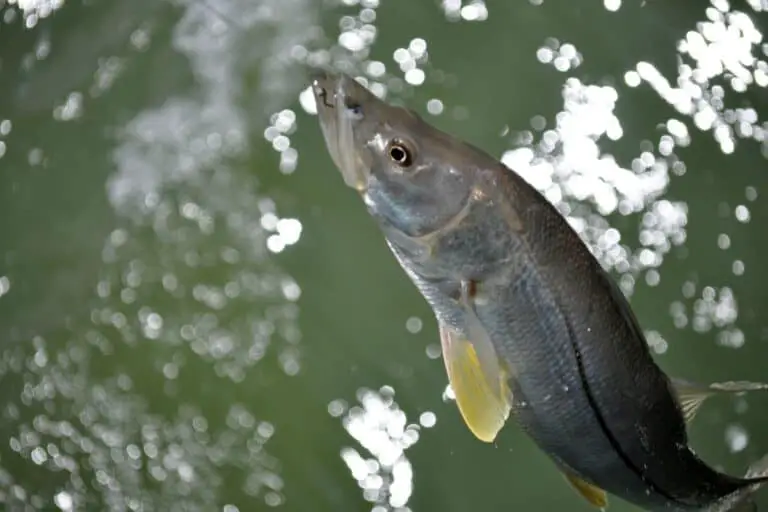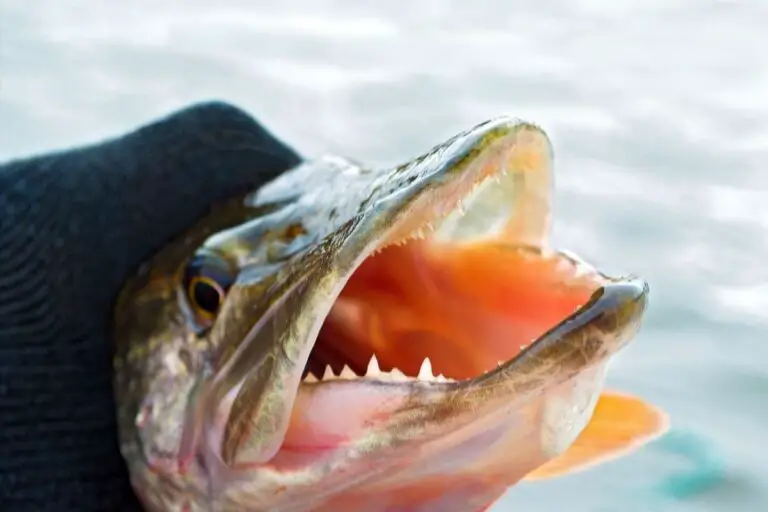Do Pike Bite on Worms? A Guide to Catching Pike with Worms
Live baits such as earthworms and nightcrawlers are some of the most popular and effective kinds of bait you can use for a variety of freshwater fish species.
Just about any freshwater fish will eat a worm, however, some fish species like members of the pike family present more of a challenge when it comes to biting worms and can and can rarely be caught on them.
So, do pike bite on worms? Pike will rarely bite on worms because worms aren’t a viable food source in the areas where pike reside. Pike are more likely to bite on artificial lures and other baitfish such as yellow perch, bluegill and sunfish, suckers, herring, and shad, shiners, and rainbow trout if you hook them on a worm.
Keep reading to learn more about which fish species you will bite on worms, how to rig a worm, and what kind of bait that pike fish will actually bite on.
Table of Contents
What Fish Will Bite On Worms?

Almost all freshwater gamefish and baitfish in North America will bite on earthworms and nightcrawlers. That is because they cause a wiggling natural action that effectively attracts fish.
Some species are much more likely to bite on worms than others such as bluegills, trout, chubs, suckers, panfish, shiners, catfish, striped bass, shad, freshwater drum, walleye, and bullheads.
On the other species like pike, muskies, chain pickerel, adult largemouth bass, and carp are not interested in biting on worms.
Nightcrawlers are a more robust kind of earthworm. Generally, the same species that will bite on worms will also bite on nightcrawlers.
Since nightcrawlers are larger than earthworms, it’s recommended not to put an entire nightcrawler on the hook when fishing for smaller fish like trout, perch, bluegills, and suckers.
It’s better to break off pieces of the nightcrawler as this will make it easier for the fish to bite, reduce waste and cost you less money, allow the nightcrawlers to go further when casting, increase your odds of getting a stronger hook-set, and prevent the fish from stealing your bait.
Can You Fish with Dead Worms?
It’s strongly recommended to avoid using dead worms as bait unless you don’t have a choice. That’s because dead worms are not very attractive to most fish since they don’t have the same wiggling action of live worms so they won’t really grab the fish’s attention.
If the worms are freshly dead and their body is still in a good condition, then they can still be good for fishing especially in streams where the bait would be moving by the fish at a rapid pace.
However, if the worms are withered or dried out from heat exposure then, they will be completely ineffective as bait because they would have an extremely off-putting smell that would drive fish away. They will also be very brittle and will disintegrate quickly when you try to put them on your hook.
So, if you have no choice but to fish with a dead worm, make sure to always pick the healthiest looking worms you can.
How to Rig Worms On Your Hook?
Rigging worms on your hook is a very simple process but first, you need to make sure you have the right hook size for the species you’re targeting.
Here are the steps you need to follow to hook a worm:
- Tie the hook to your line using a clinch knot or a quadruple overhand knot.
- Make sure your knot is secure by pulling on the hook to ensure it doesn’t slip through the eyelet of the hook.
- Cut off the “tag-end” of your line from the knot.
- Grab a healthy worm or a nightcrawler from your container. If you are targeting smaller fish, you need to break off some parts of the nightcrawler.
- Run the point of the hook through the worm or nightcrawler multiple times to create holes that will release a fish-attracting scent. It’s also recommended to leave the head or the tail of the worm free to dangle off the hook to create a wiggling action that will grab the attention of the fish.
- Attach a split shot lead weight at about 4-8 inches above your bait. This will allow your bait to sink and ground it in strong currents. It will also allow you to get a better casting distance
- You can also attach a bobber or a strike indicator float to detect subtle bites.
- Cast the worm-baited hooks in areas of water where the fish you’re targeting are known to reside.
Here is a simple video that shows it quite well:
What Kind of Bait Will Pike Bite On?
As mentioned before, pikes are more likely to bite on artificial baits that can imitate real baitfish than actual live baitfish.
When choosing a bait for pike fish, you mainly need to consider the water conditions you’re going to be fishing in.
If you’re fishing in shallow waters, it’s recommended to go for topwater lures. These can imitate mice and rats which has proven to be very effective with pike fish.
If you’re fishing in cold waters, it’s recommended to go for heavy plastic lures and crankbaits that will easily sink because pike fish tend to move to deeper areas of the water when the temperature gets colder.
Also, the movement created by the lip of a crankbait lure can be effective in getting pike to bite whether you’re trolling or casting and retrieving, and plastic lures can imitate baitfish or forage within a specific area.
If you’re fishing in muddy unclear waters, it’s recommended to go for spinners and spoons.
Spinners and spoons do not directly imitate any specific kind of bait fish or forage, however, they produce vibrations and motions that are often effective in triggering a response in pike fish and getting them to bite more.
Keep in mind that the strength of the vibrations created by these lures can vary depending on their size and shape. So, it’s a good idea to experiment with different models to see which works best for your situation.
If you want the best chances of success, check out my guide to the best Pike Baits here.
Related Questions
Can You Fish for Pike with Dead Bait?
Pike might occasionally bite on dead bait if they are very hungry and if the dead bait is rigged to appear alive and healthy. That is because pike fish are ambush predators, not scavengers, and that predator instinct they have will demand lively healthy food.
What Do Pike Feed On?
Pike are known to be opportunistic feeders. While they aren’t usually picky with what they eat, they have a preference for smaller fish including yellow perch, bluegill and sunfish, suckers, herring, and shad, shiners, and rainbow trout. They will also eat crustaceans such as crayfish, amphibians such as frogs, and sometimes even birds and mammals.
Where to Find Pike Fish?
You can mostly find pike fish in water streams, fresh water and weedy areas in nearly all states in the northern tier of the US. Vermont is considered to provide the best pike fishing in the whole area. New York is also an excellent state for pike fishing, as are Michigan, Minnesota, and Wisconsin.
Do You Need a Leader When Fishing for Pike?
Yes, you will need to use a leader when fishing for pike. That is because pike have extremely sharp teeth, they might bite through monofilament or braided lines. So, by using a leader, you will reduce the risks of damaging your mainline and losing your catch. It’s recommended to go for a fluorocarbon leader with a 15-30-pound test or heavier.
Helpful Resources
Pike Fishing: The Practice the Passion by Mick Brown (you can also check it on Amazon here)
Get Started with Pike Fishing
- Learn what are the best pike baits here
- Check out the best braided fishing lines for pike here
- Start getting results with these budget baitcasting reels
- learn how to fish for pike in the winter in my guide to cold weather pike fishing here.
If you like this article, please share it or pin it, you can find the share buttons below. We will really appreciate it ❤️


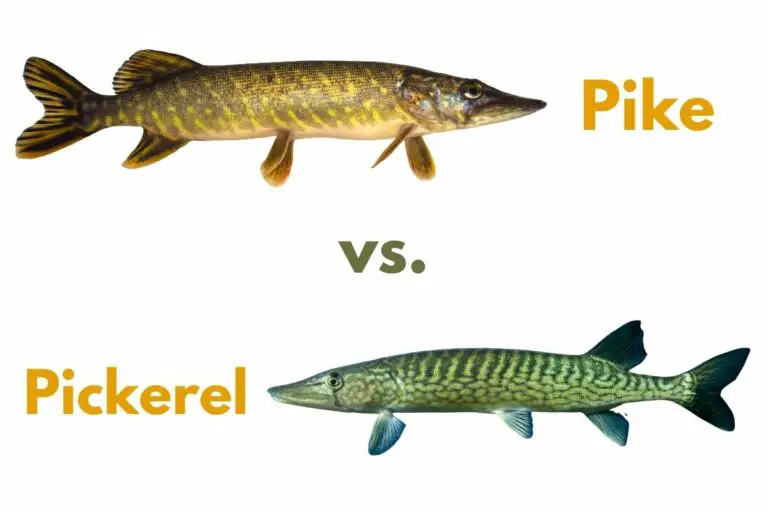
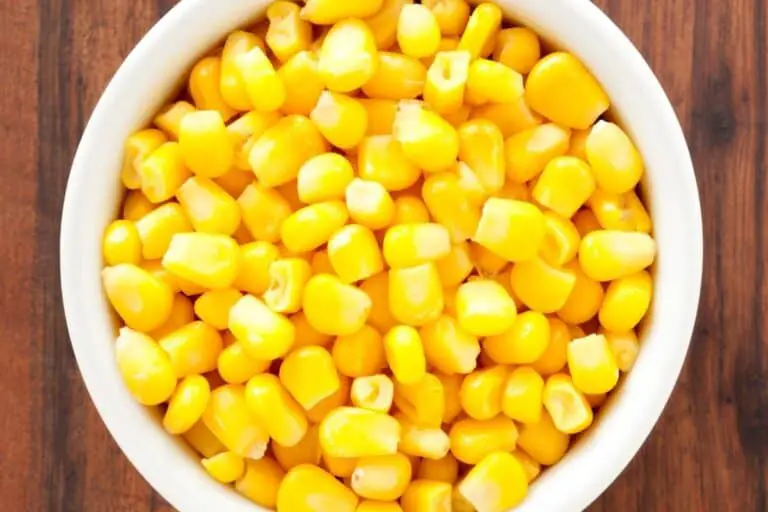
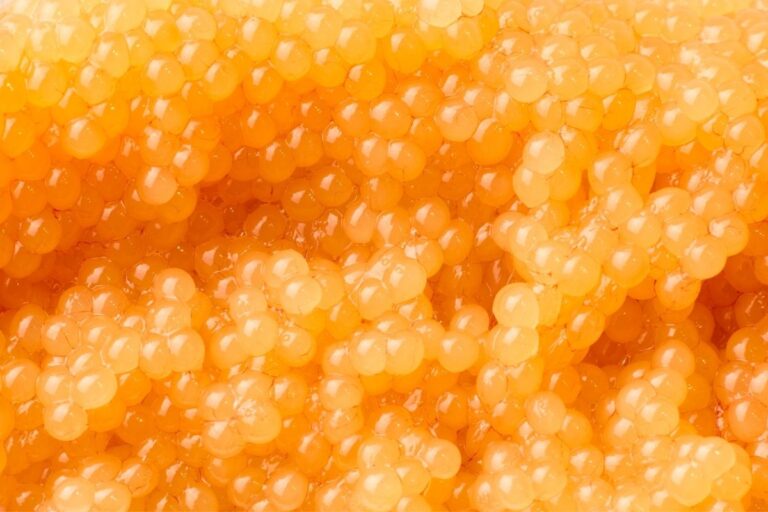
![Do Northern Pike Eat Bluegill? A Simple Guide [With Video]](https://outdoorskilled.com/wp-content/uploads/2021/10/northern-pike-fish-swimming-768x512.jpg)
